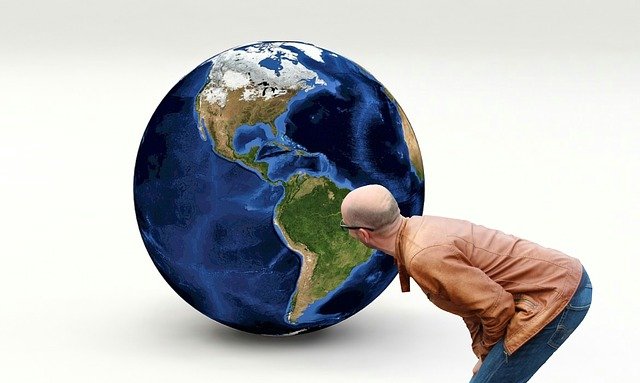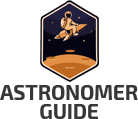Astronomy and astrology have diverged, and the Earth’s axis has divided from what it was when the first horoscopes were drawn up in ancient Babylon.
Astrology and astronomy were once (like the Great Pyramid of Egypt and Earth’s polar axis when the Pyramid was built) aligned.
However, since the time of ancient Egypt and Babylon – to which modern astrology traces its beginnings – the sky has changed, the polar axis wobbled, and astrology and astronomy have taken different paths.
Contents
Astrological and Astronomical Views of the Sky
As late as the Renaissance, Johannes Kepler at least believed in “the music of the spheres,” although he hardly saw Earth as the center of the universe the way astrologers seem to do: to correctly draw a natal chart, the kind done by astrologers, it’s necessary to imagine the various celestial bodies, Sun included, moving around the Earth.
Or at least, you have to focus on the Earth, where human actions are centered, and on which stars and other planets act to influence human actions.
Before the Copernican Revolution, of course, Ptolemy and many other astronomers and scientists did believe that the Earth was the center of everything. However, today’s believers in relativity observe that no matter where you stand in space, everything else appears to be moving away from you.
The main dispute is not whether Earth goes around the Sun or the Sun goes around Earth, but whether the universe is finite in size (and will one day cease to expand) or infinite and whether its lifespan is finite or infinite.
Polar Wobbling
The Great Pyramid of Egypt was built just after 2500 B.C. – aligned with the Earth’s axis to face the northern star Thuban – which was at that time the Pole Star. Today’s Pole Star is Polaris. The reason for the shift?

The Earth is like a spinning top and so rotates around an axis that is itself “rotating.”
Approximately every 26000 years, the Earth’s axis inscribes a “circle” in the sky. The circle passes through Thuban, Polaris, and Vega in succession.
How To Find Thuban Star With Telescope
Thuban, however, is not a particularly prominent star; in fact, the fact that it is one of the darker stars with a proper name suggests that it once held some significance.
To find Thuban, identify the final star at the point of the Big Dipper/The Plough—Alkaid—and travel all the way up to Polaris. Thuban is actually near to the Dragon’s tail.

Learn more about how to quickly and easily find any star in the sky.
Astrological Charts, Astronomical Equinoxes
On September 22, which is the fall equinox (most years), the fall day is divided into exactly twelve hours of sunlight and twelve hours of darkness.
The Sun, as seen from the Earth, regardless of where you are standing, will appear in Virgo, or rather, between Virgo and Leo.
When the spring equinox comes round in March, the Sun will appear in Pisces but will be heading toward Aquarius.
Somewhere around 2600 A.D., the Sun’s position with respect to the background stars will have moved enough so that the Sun will appear in Aquarius on the first day of spring. Earth – today “on the cusp” of the Aquarian age – will thus enter “the age of Aquarius,” celebrated in the song of the same name (sung by the 5th Dimension and part of the Hair soundtrack).
When the earliest known horoscopes were done in ancient Babylon, the spring Sun was still in another constellation, Aries. The north star at that time was Thuban. Just before 0 A.D., the spring Sun had moved into Pisces. Thus, Pisces, “the fish,” is associated by astrologers with healing and Christianity.
Read the text about the difference between astronomy and astrology here.
Horoscopes today are drawn in line with the Sun as it was in ancient Babylon. Your sun sign is the sign the Sun would have been in when you were born, had you been born in ancient Babylon, when the Egyptians were building the Great Pyramid, just before the Trojan War.
Where the Sun actually was when you were born is one or even two signs back in the zodiac wheel from your ancient “sun sign.”
Depending on when you were born: the more recently you were born, the further behind your astrological Sun, your “astronomical sun” will be found.
(Each year, the wheel is adjusted or moved a bit “backward”).
People with the sun sign Taurus (born in late April through the first three weeks or so of May) were born with the Sun in either Pisces or Aries.
This is all due to the polar wobbling.
While the Earth spins like a wobbling top so that the axis itself slowly spins around an inner circle, the dates at which the Sun is aligned with various constellations are also changing. This is known as “the precession of the equinoxes.”
Celestial Influence on Earthly Events
The idea that the Sun and planets (known to ancient astrologer-astronomers as “wandering stars” because of their motion) influence events on Earth may come from the fact that these, particularly the Moon, Venus, and Sun, influence the tides and planting cycles. In addition, sunspots affect the weather– thus, The Old Farmer’s Almanac uses sunspots to predict Earth’s weather up to a year in advance.


